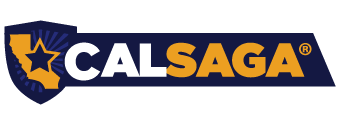OPPORTUNITIES TO IMPROVE RETENTION & HIRING
Josh Petro, TEAM Software by WorkWave, CALSAGA Network Partner
Throughout 2023, the job market stayed relatively consistent throughout. Economists reported that the U.S. was at or near full employment, meaning that virtually all the people who were able and willing to work were employed. In fact, the U.S. Bureau of Labor Statistics reported in 2023 that there were approximately one or fewer unemployed persons per job opening.
Researchers attributed part of the lingering shortfall in labor force participation to be primarily driven by people aged 55 and older. That part of the labor force retired early during the pandemic and was less likely to reenter the workforce. However, with 25 to 54-year-olds, the participation rate slightly surpassed pre-pandemic levels.
In short, the current job market is still tight for business owners throughout North America, and in order for businesses to meet their staffing needs in 2024, guarding firms will need to take advantage of actionable opportunities to help improve employee retention and hiring efforts.
Actionable strategies to improve hiring
Employees want to work for a company with a positive reputation and a successful track record for showing that they care about their workers. To help spread positive messaging, hiring and employer branding efforts can showcase that a particular workplace meets the needs of employees and encourages them to take pride in the company.
As the current job market remains tight, investing in branding lets employees stand out from the competition. Additionally, a strong employer brand can foster loyalty amongst current employees, which may boost the number of referrals from employees – a method that can also save valuable dollars on recruitment costs.
Successfully building and promoting an employee brand can start with utilizing a widely trafficked career website, such as Indeed.com. Since the majority of job applications come from career sites, potential employees will want to utilize these resources that can provide valuable information about your company. Promote your openings but also use this resource to showcase benefits and workplace culture.
Combining job sites with an applicant tracking system (ATS) can take things a step further to improve hiring and help a company source applicants at high volumes. Using an ATS will also help with transferring job and candidate information. Expect the hiring process to move much quicker since ATS platforms help recruiters post openings and better manage candidates.
With an ATS platform, it’s possible to reach a wider pool of applicants and review work history and qualifications more expediently, while running background checks and screening candidates more efficiently. An ATS can also help discern where exactly hires originate. For example, an employer may want to know how many hires found the Indeed job link online or via the company website, since that provides details pertaining to return on investment and cost per application.
Retaining qualified workers
Security professionals deal with high turnover rates, but it is possible to use modern technology to retain workers. In particular, earned wage access or on-demand pay is an alternative to increasing base pay that lets employers reap retention benefits.
Instead of employees relying on services, such as third-party payday lenders, who can charge high interest rates and create a cycle of debt – employees can request an advance of their pay without disrupting the actual pay cycle.
Business software solutions that provide earned wage access typically handle the calculations and distribute available funds to employees, while the normal payroll cycle of a business continues without any interruptions. In the past, earned wage access has encouraged good electronic timekeeping habits while reducing employee turnover.
In addition to providing a useful benefit to retain employees, security professionals can take steps to ensure that new hires show up for work on their first day. While background checks are being completed before hiring a new employee, it has been reported that a number of employees find other positions during the screening process, which could take weeks.
Business owners can consider implementing pre-boarding strategies to make sure they remain in contact with new hires and keep them engaged. A few examples of pre-boarding strategies may include sending follow-up greeting messages from their new manager to welcome them to their team. Human resource professionals can also engage newly hired workers in the onboarding process by providing answers about benefits and answering common questions.
Applying labor market research
To aid employers in the security industry in understanding employee turnover and low labor participation, our team of industry experts compiled this in-depth analysis of 2023 global trends for cleaning and security companies, providing a forecast for what to expect in 2024.
In this detailed guide titled Data Report: Labor Trends, we highlight opportunities for companies to become employers of choice, shorten their time to hire and implement proven strategies to combat high turnover rates, while outlining how to use labor market data to strategize during a tough economic climate. The content is accessible via the QR code in the TEAM Software ad within this issue, or it can be found on our website at https://teamsoftware.com.
 Josh has been supporting customers for over a decade. After working as a Product Manager for over three years, he moved into a director role at the beginning of 2023, where he has continued to express his passion for crafting products that truly enrich the lives of others.
Josh has been supporting customers for over a decade. After working as a Product Manager for over three years, he moved into a director role at the beginning of 2023, where he has continued to express his passion for crafting products that truly enrich the lives of others.









